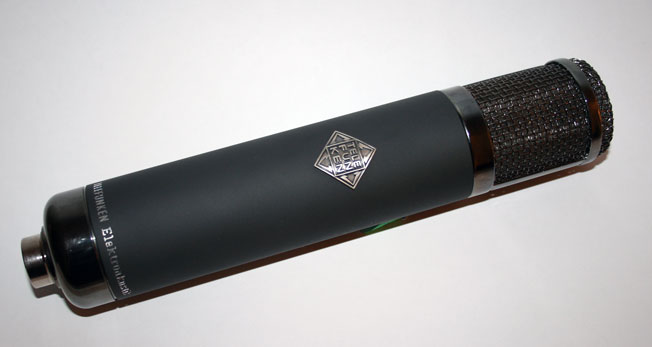The Telefunken AR-51
Review by Fox Audio Research
We had the pleasure of examining the Telefunken AR-51 microphone, courtesy of our local Long and McQuade music outlet. This microphone is beautiful to look at with its flat black barrel and glossy charcoal grill and base. The mic feels heavier than similarly constructed mics like the APEX 460 and grill mesh is more open than it's lower priced cousins. The construction also has other features found only in boutique microphones but it really surprised us when we looked at the audio response.
Peeking Under the Covers
The first thing we noticed when we peeked inside was the use of Teflon (PTFE for the international readers) insulated wire throughout the microphone. Teflon has exceptional dielectric (insulating) characteristics and is typically used wherever high voltage or very high impedance connections are encountered.
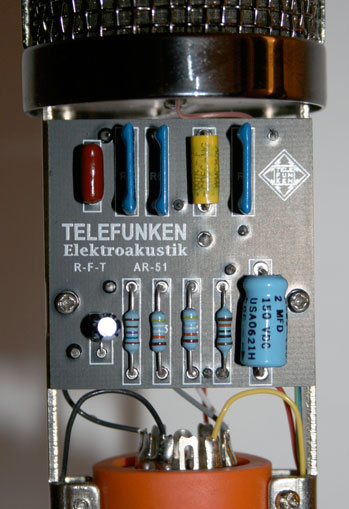
AR-51 Printed circuit board is very simple
A Classic Preamp Circuit
One might assume that by naming a microphone with the numbers "51" that it will have characteristics resembling the ELA m251. You would be correct in this case as far as the electronics is concerned. The circuit used seems a dead ringer for the m251 circuit with exception that the cathode bias resistor is different. 2.7K versus 1.8K in the original. The reasons are simple. First the voltage on the ELA m251 is 120 Volts. The AR-51 uses 140 Volts. Second, the tube used in the AR-51 is not the famed 6072, used by AKG, but rather a Mullard ECC81, which is the European 12AT7.
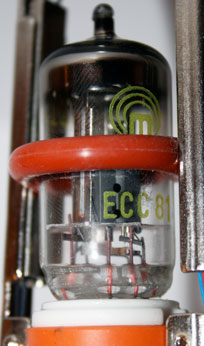
The Mullard ECC81 is a very high quality 12AT7 tube
Using that tube creates a much lower impedance output than the 6072 would do and therefore gives the mic preamplifier an extended frequency response over a 6072 when driving the same transformer. And with a lower plate resistance (Rp) a higher bias voltage is needed to set the correct operating point. We measured the bias voltage at 1.4V in the AR-51 and plate current was on the order of 600uA. The response of the amplifier with -20dBu injected into it can be seen below. 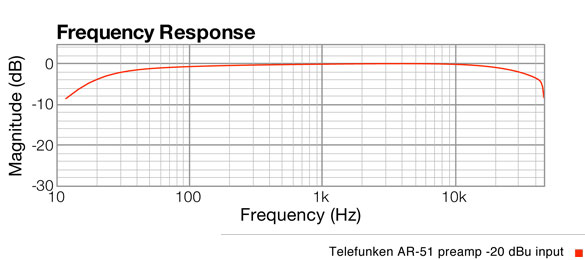
Distortion a Little higher than we like
The AR-51 exhibits a little over 1% distortion (over -40dB below fundamental signal) when we drive the preamp with -20dBu. We like to see than a little lower than 1% in our mics but it's acceptable. The bottom end gets up over -30dB which is more than 10% 2nd Harmonic distortion. This is typical of mic amplifiers with small transformers in our experience. Can't be fixed unless you want to use more IRON like a BV8.
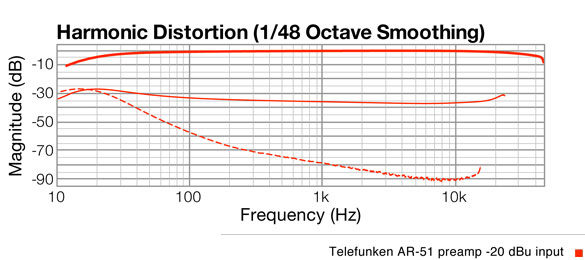
Shhh! This Thing is Quiet!
Using a 12AT7 instead of a 6072 usually means more noise but not in this case. This tube is the quietest 12AT7 tube we have ever measured. Noise was a full 102 db below the signal at 1Khz which compares well with our best very NOS 6922s in the shop and the 6922 is usually the Gold standard for low noise in vacuum tubes.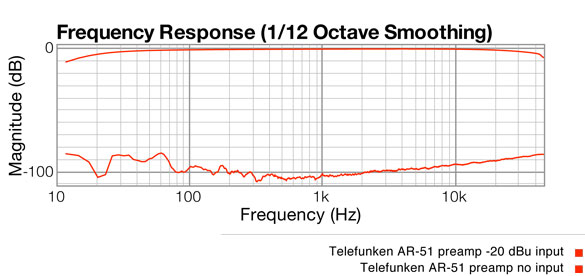
Telefunken Electroacoustik mentions using heavier traces on their circuit boards and we can see that this is true. The technique of thickening the traces with solder was used on almost all printed circuit board equipment in days of old and it still has the same effect today; much lower resistance traces.
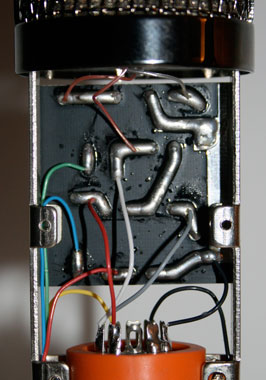
The mechanics of the microphone are clearly of Chinese origin. The Alctron Factory is our best guess. But there has been attention to detail here befitting of the name Telefunken.
The acoustic response of the microphone was the really interesting discovery, especially when we compared it to our own FAR m251 unit. Cleary some thought went into this aspect of the AR-51.
If you have any comments for us on this review send them to :

